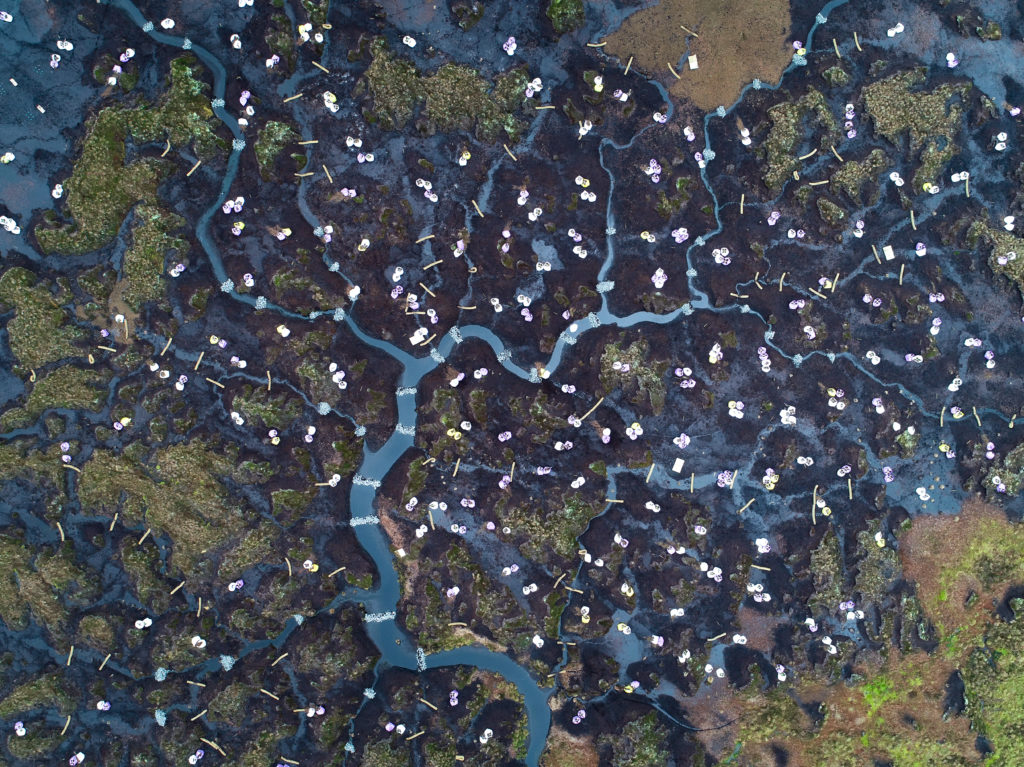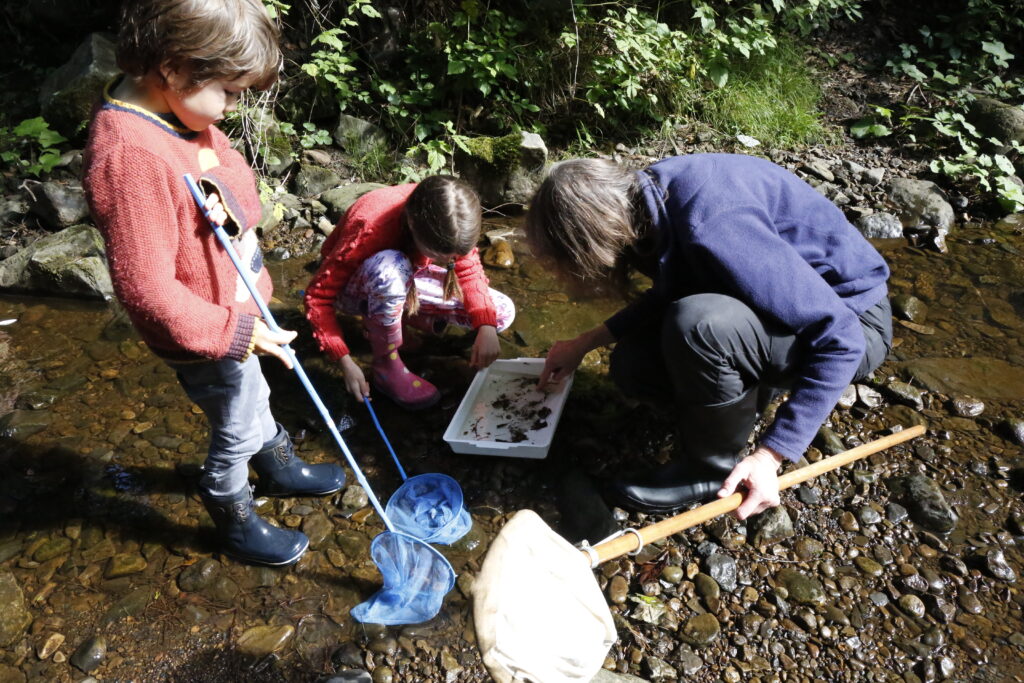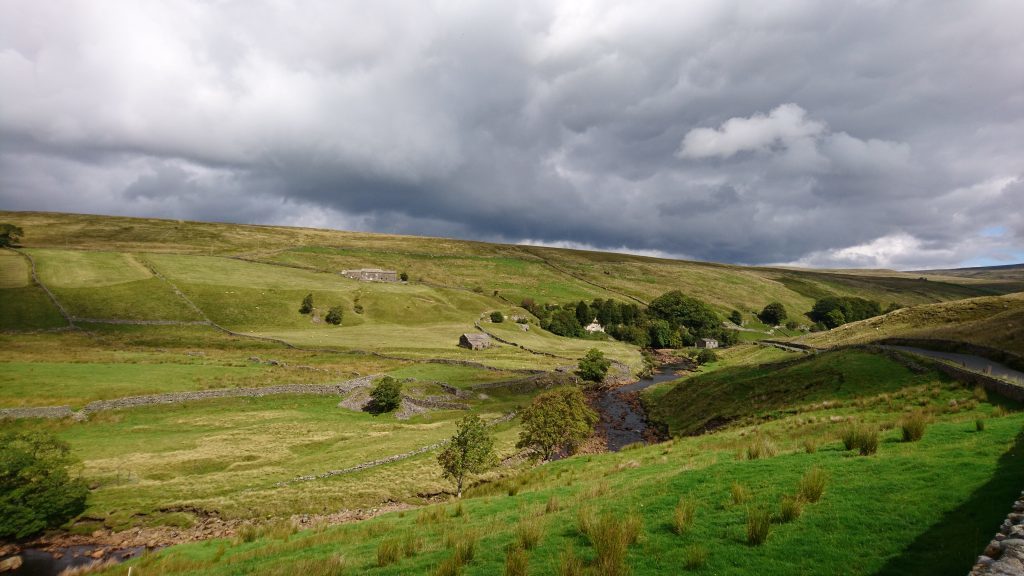News
Fellfoot Voices: Field notes from Cumrew
5 December 2024
Field notes from Cumrew
Fellfoot Voices blog by Guy Broome
I am a retired surgeon, living in Cumrew, a small village in the North Pennines AONB Partnership’s Fellfoot Forward Landscape Partnership scheme area. I have lived here for 12 years. I love it for its proximity to amazing nature, scenery and the friendliness of true local Cumbrians who have been here for several generations. I got involved in the Fellfoot Forward scheme by attending one of the first public project planning meetings. I believe that there is huge potential for this scheme to stimulate interest and knowledge in nature and the environment, a passion which started for me during childhood.

I became interested in butterflies and moths at the age of seven, when I encountered an insect expert in a London department store, giving a demonstration of pinned tropical species. I then chose a junior collecting kit as my Christmas present. The demonstrator can never have known that he had sparked a lifelong obsession. Since the COVID-19 lock-down I have enjoyed finding some splendid insects in my garden and immediate surrounds in Cumrew, it’s amazing what you can discover on your doorstep. I regularly share my observations of the wildlife I observe locally, with the Fellfoot Forward Facebook group. Here’s a taster of some of my posts during May…
Butterflies, common and rare
The Wall brown is one of the rarest species in Fellfoot Forward territory. 30 years ago, they were common throughout UK, before the population went through a crash. They are now re-colonising from their coastal strongholds. Reasons for the fluctuations are unknown but may reflect abundance cycles of Ichneumon wasps, that parasitise all butterfly and moth larvae. The Green-veined white, is now abundant and replacing the Orange tips, that are now at the end of their spring flight period. Orange tip eggs can be found on the flower stems of Hedge mustard and Honesty. Small coppers, like open-rough ground, laying their eggs on Sorrel. The blue scales on the hindwing vary in prominence, with Cumbria having a population where the blue can be particularly vibrant.

Elephant-like moths
Moths activity is hotting up now with the rain and mild nights in my Cumrew garden. Peach blossom, Elephant hawk and Grey pug are among the new visitors. The Elephant hawk caterpillars feed on Rosebay willowherb aka Fire weed, they are often seen crawling on the ground before they pupate in August and have necks that look like an elephant’s trunk. If you let the Willowherb grow up in your garden you are bound to get them and the flowers look as nice as most garden centre flowers. This moth species has only recently appeared in Cumbria from the South. The Peach blossom is one of our most beautiful moths and surprisingly has close relatives in China and the high mountains of Southeast Asia. Pug moths are so named as their wing shape looks like the moths of Pug dogs, supposedly.

Lively leaky dams
It is worth flagging up the wildlife benefits of the Cumrew flood prevention leaky dams. In low water they act as ponds topped up by a trickle of freshwater. They are teeming with water invertebrates. Yesterday I saw a hatch of several thousand insects, what looked to be mayflies, the largest hatch I have ever seen anywhere. The birds, mostly warblers were going bananas feeding off them. Also, the Small copper butterfly and the iridescent Rainbow greenlock beetle that are around at the moment are worth looking out for, on field margins and paths.
A cold spell
Cold nights, strong winds and the drought have meant that nature watching has been a bit tough the last few days but there is still plenty out there. The White ermine moth is one that may well come to your house lights in May. It has colouring suitable to the current Arctic nights and if disturbed has the curious habit of playing dead, this can be a bit akin to the Monty Python, Norwegian blue parrot sketch but if left alone it will eventually fly off. The Willow warbler is one of our commonest summer bird migrants and seems to have adapted to the toils of long-distance migration and shortages of insect food compared to other migrant species. Wheatears are pretty easy to see on the higher fields and fellsides.

Some technical advice
For simple observation, binoculars as well as being great for birds are good for butterflies and other large insects at closer range. For small and micro insects, a simple hand lens is cheap and small to carry. Digital cameras have advanced hugely in recent years and pretty much any model from a cheap compact through bridge, mirrorless and digital SLRs, will take good long range and macro wildlife photos. Mobile phone cameras are also great for taking shots when you encounter something unexpectedly and offer immediate sharing/ recording solutions (signal allowing).
Digital microscopes that plug into a USB portal will take excellent micro photos easily up to times 40 magnification and good ones retail at £75, cheaper than a digital camera. UV light moth and nocturnal insect traps can run off mains electric or batteries for remote sites. Trail cameras (outdoor static cameras that can be hidden/camouflaged and are triggered by movement) retail from £30 and the infra-red flash will not disturb the animals. I’ve got some great footage of otters, pole cats and a roe buck deer in my Facebook posts. Once you get used to the kit, you’ll be amazed at the variety of wildlife you can discover.

After retiring early from the NHS in 2015, I have done technical volunteering for many charities and organisations in Cumbria and abroad, promoting and teaching wildlife interest and skills. I even did a deal with University of Cumbria students by demonstrating moth trapping in return for my schooling in nocturnal mammal trail camera techniques. Sharp-eyed students also proved brilliant at spotting tiny, flitty insects for me to photograph. I enjoy sharing my knowledge and meeting other enthusiasts, there is always more to learn about wildlife and members of the public can make an important contribution to conservation by sharing their observations.
Share your own field records
For those in the know, you can submit your wildlife records online with Cumbria Biodiversity Data Centre (CBDC). For anyone keen to learn more, there will be Fellfoot Forward events in partnership with CBDC and local specialists to come. These will focus on identification skills, wildlife recording and photography, either online or in person, in the coming year. By joining the Fellfoot Forward Facebook group, you’ll be able to keep up with my nature updates and Fellfoot Forward events too.












